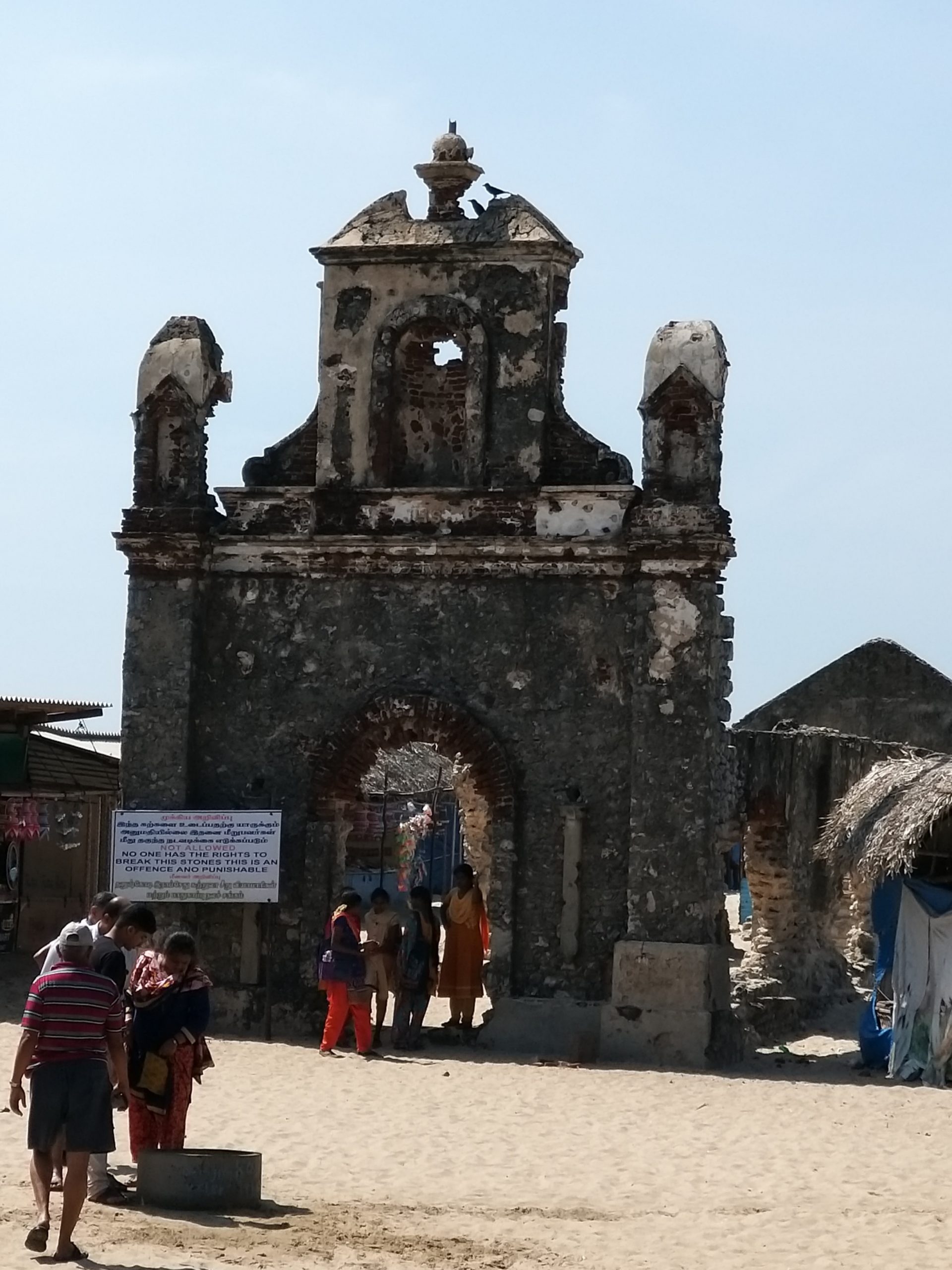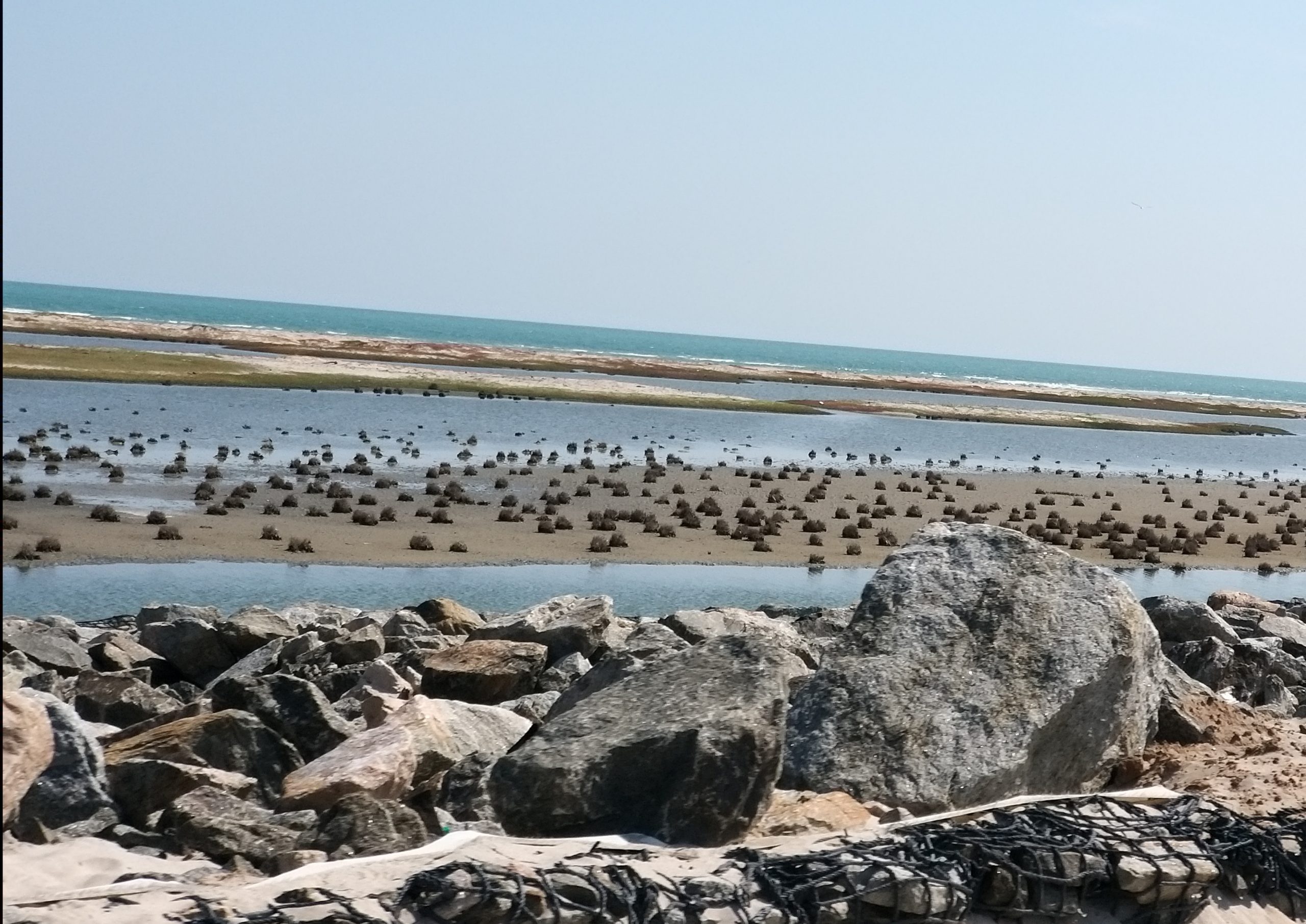| THE GHOST TOWN DHANUSHKODI Dhanushkodi, the southern tip of the small island Rameswaram, was totally ravaged by nature and time.Even today it looks like a dreadful lonely area where some old ruined structures haunt you like anything. It seems to be safe only during day time and there is restriction in movement too. Small tourist buses and mini cabs of the tourists are allowed till 5 O’Clock in the evening. The amazing sun rise and sun set can only be enjoyed either from your camp site or from far off point. The government declared the town as ghost town nearly sixty six years ago. It was unfit for living.But for the inhabitants now it’s the place of their lively hood. No permanent pucca structures are here. Mostly the fishermen who lives in thatched temporary huts depends on selling fishes that caught from the sea using conventional country boat and net. They face many threats from Sri Lankan police while fishing from the offshore though there exists maritime agreements between the two nations. Among others, met Kamala who sells cut fruits to the tourists. ” I am here all the days and gets nearly two hundred to three hundreds rupees for our living.” “In summer it’s very hot and when the rain starts there will be nobody here. I will go to the Kodandaramaswamy Temple area.” “During the deluge, everything washed away but it was only the Kodandaramaswami Temple remained untouched. Our lords Rama, Sita, Lakshmana and Vibhishana are still there as our saviours.” the Cab driver Murugan was very specific in visiting the age old temple with his family. It’s the Rama Sethu, a long stretch of sand bank under the sea between Pamban Island and Mannar Island of Sri Lanka had been a mystery to the world. The rampant boulders and the ruins left are the skeltons believed to be the bridge that used in Ramayana days by Hanuman to reach Sri Lanka. The Geological Survey in their report noted: On 17 December 1964, a depression formed in the South Andaman Sea and later within days it intensified into a great cyclone. On 22 December, it crossed Vavunia in Sri Lanka and on 23 December it struck on the coast of Rameswaram at Dhanushkodi, the southern tip of Pampan Island in Tamil Nadu. The cyclone with an estimated velocity of 280 kilo meters per hour, the tidal waves which stood at seven meters height struck the coast and submerged the land of about half a kilometres in width , seven kilometres in length from north to south of Pampan island. Nearly 1800 people lost their life including 115 passengers on board the Pampan Dhanushkodi Passenger Train. The metre-guage railway line from Pampan to Dhanushkodi was washed away during the heavy cyclone .The town Dhanushkodi was totally destroyed and the state government declared the town as a ghost town unfit for living. It’s only after thirty eight years, Southern Railway started considering a project of re-laying the railway line to Dhanushkodi from Rameswaram, the pilgrim Town in south India. It remained inundated for years. Most of the inhabitants were poor fishermen who seek their daily life in the sea. During the British period and years after independence, it was a small port for the onward movement to Talaimannar in Sri Lanka. The cyclone devastated everything. School, Post and Telegraph Office, church, Railway Station, Railway Hospital and the Port were washed away and still some of the mutilated ruins of some building are seen even today. The busy town Arichal Munai , the local men used to say in tamil for Dhanushkodi, was no more but the fury of nature couldn’t stop the memories of a glorious past. Really it’s picturesque to draw a pen picture of a family with kids and aged moving in groups taking railway ticket, boarding a Passenger Train from Jaffna in old Ceylon crossing the Palk Strait through the steam boat, visiting the Madurai Temple and back in those days. The children and the elders might have purchased colourful bangles, bindies and ribbons from the busy port town. Again after years visitors are here to see the ruins and glory of an ancient past. It’s highly ecstatic to visit the historic places in and around Rameswaram. Now it’s also a heaven for the migratory birds and other rare fauna.The white silver sand banks that raised during the rainy season becons the rare species of the ocean sometimes. |



